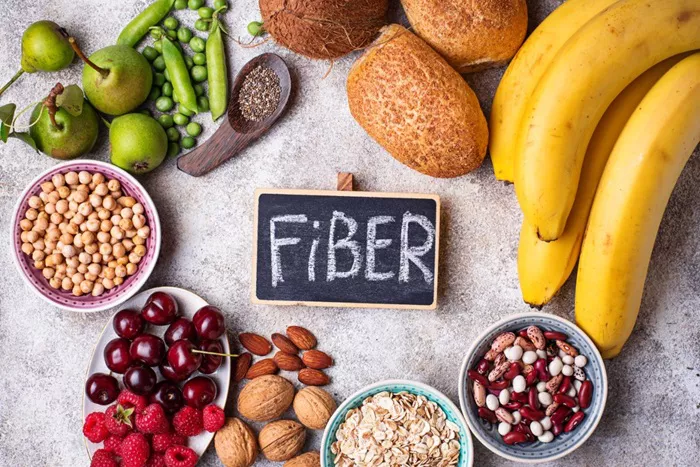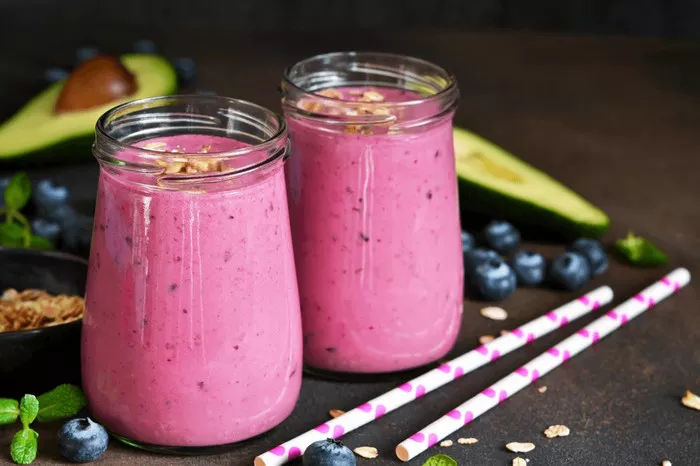Fiber is a crucial component of a healthy diet, essential for maintaining proper digestive function and promoting overall health. However, some individuals experience discomfort and adverse symptoms when consuming fiber-rich foods, a condition known as fiber intolerance. This article explores the causes of fiber intolerance, its symptoms, potential underlying mechanisms, and strategies for management.
What is Fiber Intolerance?
Fiber intolerance occurs when the digestive system cannot properly process fiber, leading to symptoms such as bloating, gas, abdominal pain, and diarrhea. Unlike fiber allergies, which involve an immune response, fiber intolerance is typically related to how the body handles fiber during digestion and absorption.
Types of Dietary Fiber
There are two main types of dietary fiber, each with different properties and effects on the digestive system:
Soluble Fiber: This type of fiber dissolves in water, forming a gel-like substance in the gut. It is found in foods like oats, beans, apples, and citrus fruits. Soluble fiber can help lower cholesterol levels and regulate blood sugar levels.
Insoluble Fiber: This type of fiber does not dissolve in water and adds bulk to the stool, helping to promote regular bowel movements. It is found in foods like whole grains, nuts, and vegetables.
Both types of fiber are essential for digestive health, but some individuals may find it challenging to tolerate certain fiber-rich foods.
Causes of Fiber Intolerance
Fiber intolerance can arise from various factors, including digestive disorders, bacterial imbalances, and genetic predispositions. Understanding these causes can help in managing the condition more effectively.
Digestive Disorders
Several digestive disorders can contribute to fiber intolerance:
Irritable Bowel Syndrome (IBS): IBS is a common gastrointestinal disorder characterized by symptoms such as abdominal pain, bloating, and altered bowel habits. Individuals with IBS may find that high-fiber foods exacerbate their symptoms, particularly those containing insoluble fiber.
Small Intestinal Bacterial Overgrowth (SIBO): SIBO occurs when there is an abnormal increase in the number of bacteria in the small intestine. This condition can lead to excessive fermentation of fiber, resulting in gas, bloating, and discomfort.
Inflammatory Bowel Disease (IBD): IBD, which includes Crohn’s disease and ulcerative colitis, involves chronic inflammation of the digestive tract. Fiber can sometimes irritate the inflamed tissues, causing pain and worsening symptoms.
Bacterial Imbalances
The gut microbiome, which consists of trillions of bacteria residing in the digestive tract, plays a crucial role in fiber digestion. An imbalance in the gut microbiome, known as dysbiosis, can affect fiber tolerance:
Dysbiosis: Dysbiosis can result from factors such as antibiotic use, poor diet, stress, and infections. An imbalance in gut bacteria can lead to improper fermentation of fiber, producing excess gas and causing discomfort.
Specific Bacterial Strains: Certain bacterial strains are more efficient at breaking down fiber. A deficiency in these beneficial bacteria can impair fiber digestion and contribute to intolerance.
Enzyme Deficiencies
Enzymes are proteins that facilitate chemical reactions, including the breakdown of food in the digestive system. Enzyme deficiencies can hinder the proper digestion of fiber:
Amylase Deficiency: Amylase is an enzyme that helps break down carbohydrates, including certain types of fiber. A deficiency in amylase can lead to incomplete digestion of fiber, causing symptoms of intolerance.
Lactase Deficiency: Lactase is an enzyme that breaks down lactose, a sugar found in dairy products. While not directly related to fiber, individuals with lactase deficiency (lactose intolerance) may also experience fiber intolerance due to overall digestive sensitivity.
Genetic Factors
Genetic predispositions can also play a role in fiber intolerance:
Genetic Variations: Certain genetic variations can affect how the body processes fiber and other carbohydrates. For example, variations in genes related to the function of gut bacteria or enzyme production can influence fiber tolerance.
Family History: A family history of digestive disorders, such as IBS or IBD, can increase the likelihood of developing fiber intolerance, suggesting a genetic component to the condition.
Symptoms of Fiber Intolerance
The symptoms of fiber intolerance can vary in severity and may include:
Bloating: A common symptom, bloating occurs when excess gas accumulates in the digestive tract, causing the abdomen to feel swollen and uncomfortable.
Gas: Excessive gas production can result from the fermentation of undigested fiber by gut bacteria, leading to flatulence and discomfort.
Abdominal Pain: Cramping and abdominal pain can occur due to the increased gas and pressure in the intestines.
Diarrhea: Some individuals with fiber intolerance may experience diarrhea, as undigested fiber can draw water into the intestines and speed up bowel movements.
Constipation: Paradoxically, some individuals may experience constipation, particularly if insoluble fiber irritates the gut lining and disrupts normal bowel movements.
Diagnosing Fiber Intolerance
Diagnosing fiber intolerance involves a combination of clinical evaluation, dietary assessment, and diagnostic tests:
Clinical Evaluation: A healthcare provider will take a detailed medical history, including symptoms, dietary habits, and any underlying medical conditions. A physical examination may also be conducted to assess for signs of digestive disorders.
Dietary Assessment: Keeping a food diary can help identify patterns and specific foods that trigger symptoms. This information can guide dietary modifications and further testing.
Diagnostic Tests: Several tests can help diagnose underlying conditions contributing to fiber intolerance:
Lactose Tolerance Test: To rule out lactose intolerance, which can have overlapping symptoms with fiber intolerance.
Breath Tests: To detect SIBO or carbohydrate malabsorption by measuring hydrogen or methane levels in the breath.
Stool Tests: To assess for dysbiosis, inflammation, and other abnormalities in the digestive system.
Managing Fiber Intolerance
Managing fiber intolerance involves dietary modifications, lifestyle changes, and addressing any underlying conditions. Here are some strategies for managing fiber intolerance effectively:
Gradual Introduction of Fiber: Introducing fiber gradually into the diet allows the digestive system to adapt. Start with small amounts of fiber and gradually increase the intake over several weeks.
Choosing the Right Types of Fiber: Opt for soluble fiber sources, such as oats, bananas, and carrots, which are generally better tolerated than insoluble fiber. Avoid high-fiber foods that are known to trigger symptoms, such as beans, whole grains, and cruciferous vegetables.
Hydration: Drinking plenty of water helps fiber move through the digestive system smoothly, reducing the risk of bloating and discomfort.
Probiotics and Prebiotics: Probiotics are beneficial bacteria that can help restore balance in the gut microbiome. Prebiotics are non-digestible fibers that feed these beneficial bacteria. Incorporating probiotic-rich foods, such as yogurt and kefir, and prebiotic-rich foods, such as garlic and onions, can support gut health.
Enzyme Supplements: Enzyme supplements, such as alpha-galactosidase or lactase, can aid in the digestion of certain fibers and carbohydrates, reducing symptoms of intolerance.
Addressing Underlying Conditions: Treating any underlying digestive disorders, such as IBS or SIBO, can improve fiber tolerance. This may involve medications, dietary changes, and lifestyle modifications.
Mindful Eating: Eating slowly and chewing food thoroughly can aid in digestion and reduce symptoms of fiber intolerance. Mindful eating practices, such as paying attention to hunger and fullness cues, can also promote better digestive health.
Conclusion
Fiber intolerance is a condition that can significantly impact quality of life, but understanding its causes and implementing effective management strategies can alleviate symptoms and improve digestive health. By identifying specific triggers, making dietary adjustments, and addressing underlying conditions, individuals with fiber intolerance can enjoy a balanced diet while minimizing discomfort.
Future research into the mechanisms of fiber intolerance and the development of targeted treatments will continue to enhance our understanding and management of this condition. For those experiencing persistent digestive symptoms, consulting a healthcare provider or a registered dietitian can provide personalized guidance and support.
[inline_related_posts title=”You Might Be Interested In” title_align=”left” style=”list” number=”6″ align=”none” ids=”9486,9482,9479″ by=”categories” orderby=”rand” order=”DESC” hide_thumb=”no” thumb_right=”no” views=”no” date=”yes” grid_columns=”2″ post_type=”” tax=””]































